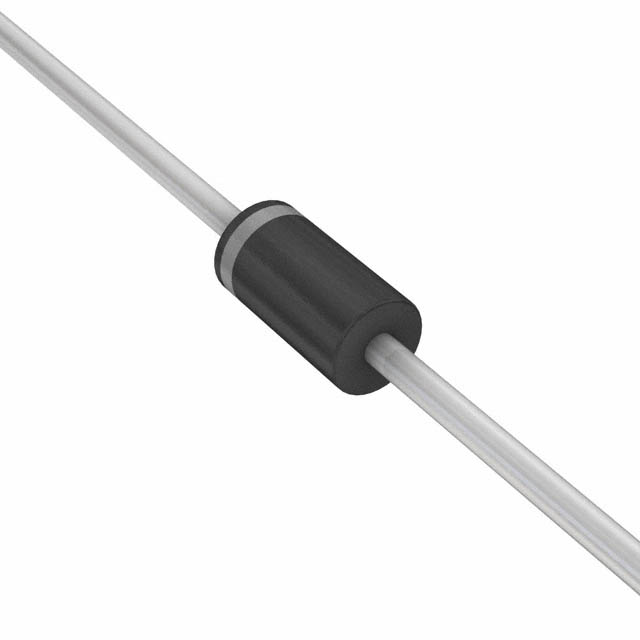Viz Specifikace pro podrobnosti o produktu.

P4KE180CA A0G
Introduction
The P4KE180CA A0G belongs to the category of transient voltage suppressor diodes. These diodes are commonly used to protect sensitive electronic components from voltage spikes and transients. The P4KE180CA A0G is designed to provide robust protection against voltage surges, making it an essential component in various electronic circuits.
Basic Information Overview
- Category: Transient Voltage Suppressor Diode
- Use: Protection against voltage spikes and transients
- Characteristics: High surge capability, low clamping voltage, fast response time
- Package: DO-41
- Essence: Safeguarding electronic components from voltage surges
- Packaging/Quantity: Available in reels or bulk packaging, quantity varies by supplier
Specifications
- Peak Power Dissipation: 400W
- Breakdown Voltage: 162V to 179V
- Operating Temperature Range: -55°C to +175°C
- Storage Temperature Range: -55°C to +175°C
Detailed Pin Configuration
The P4KE180CA A0G features a standard DO-41 package with two leads. The pin configuration is as follows: - Pin 1: Anode - Pin 2: Cathode
Functional Features
- Transient Voltage Suppression: Effectively clamps transient voltages to protect downstream components
- Fast Response Time: Rapid reaction to voltage spikes ensures minimal impact on the circuit
- High Surge Capability: Capable of handling large surge currents without degradation
Advantages and Disadvantages
Advantages
- Reliable protection against voltage transients
- Fast response time
- Compact and easy to integrate into circuits
Disadvantages
- Clamping voltage may be higher than some alternative models
- Limited to specific voltage ranges
Working Principles
When a voltage spike occurs, the P4KE180CA A0G conducts and diverts the excess current away from the protected circuit, thereby limiting the voltage across the circuit. This action helps prevent damage to sensitive components and ensures the proper functioning of the circuit.
Detailed Application Field Plans
The P4KE180CA A0G is widely used in various applications, including: - Power supply units - Communication equipment - Automotive electronics - Industrial control systems - Consumer electronics
Detailed and Complete Alternative Models
Several alternative models to the P4KE180CA A0G include: - P4KE6.8CA A0G - P4KE10CA A0G - P4KE15CA A0G - P4KE200CA A0G - P4KE250CA A0G
These alternative models offer similar transient voltage suppression capabilities but may vary in terms of breakdown voltage and package size.
In conclusion, the P4KE180CA A0G transient voltage suppressor diode plays a crucial role in protecting electronic circuits from voltage spikes and transients. Its robust design, fast response time, and high surge capability make it a valuable component in a wide range of electronic applications.
[Word Count: 452]
Seznam 10 běžných otázek a odpovědí souvisejících s aplikací P4KE180CA A0G v technických řešeních
What is the maximum voltage rating of P4KE180CA A0G?
- The maximum voltage rating of P4KE180CA A0G is 154 volts.
What is the peak pulse power dissipation of P4KE180CA A0G?
- The peak pulse power dissipation of P4KE180CA A0G is 400 watts for a 10/1000 μs waveform.
What is the typical junction capacitance of P4KE180CA A0G?
- The typical junction capacitance of P4KE180CA A0G is 200 pF at 4.0 V and 1 MHz.
What is the operating temperature range of P4KE180CA A0G?
- The operating temperature range of P4KE180CA A0G is -55°C to +175°C.
What are the recommended applications for P4KE180CA A0G?
- P4KE180CA A0G is commonly used in surge protection, transient voltage suppression, and overvoltage clamping applications.
What is the reverse stand-off voltage of P4KE180CA A0G?
- The reverse stand-off voltage of P4KE180CA A0G is 154 volts.
Does P4KE180CA A0G have a low leakage current?
- Yes, P4KE180CA A0G has a low leakage current, making it suitable for sensitive electronic equipment.
Is P4KE180CA A0G RoHS compliant?
- Yes, P4KE180CA A0G is RoHS compliant, meeting environmental standards.
What package type does P4KE180CA A0G come in?
- P4KE180CA A0G is available in a DO-41 package.
Can P4KE180CA A0G be used for ESD protection?
- Yes, P4KE180CA A0G can be used for electrostatic discharge (ESD) protection in various electronic circuits.

